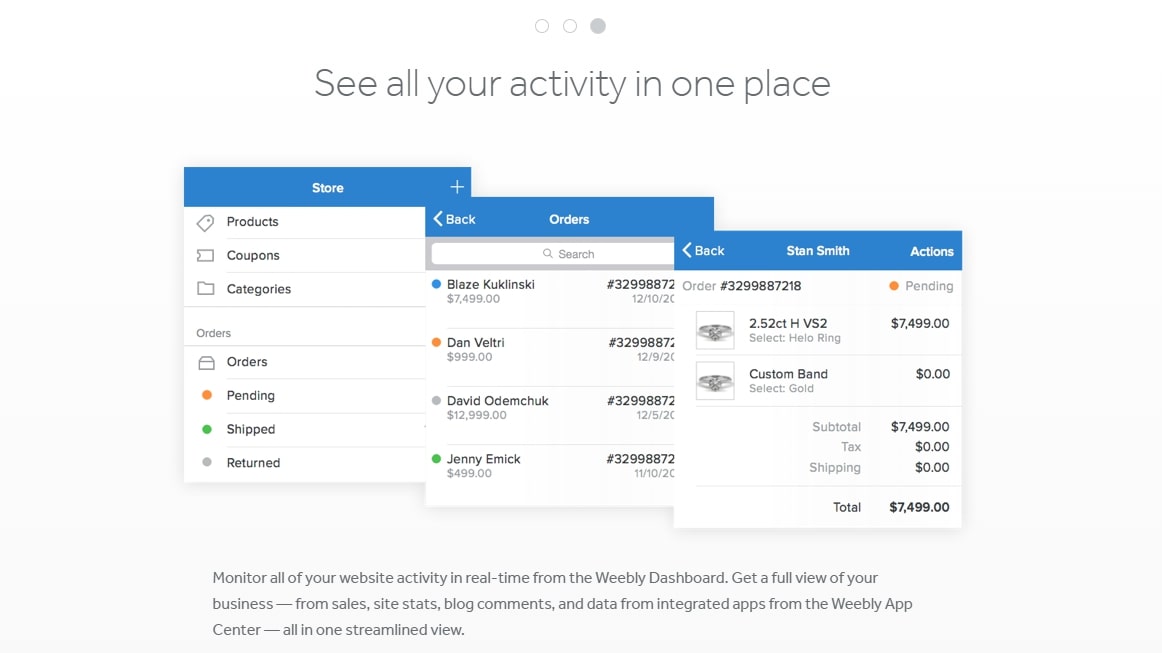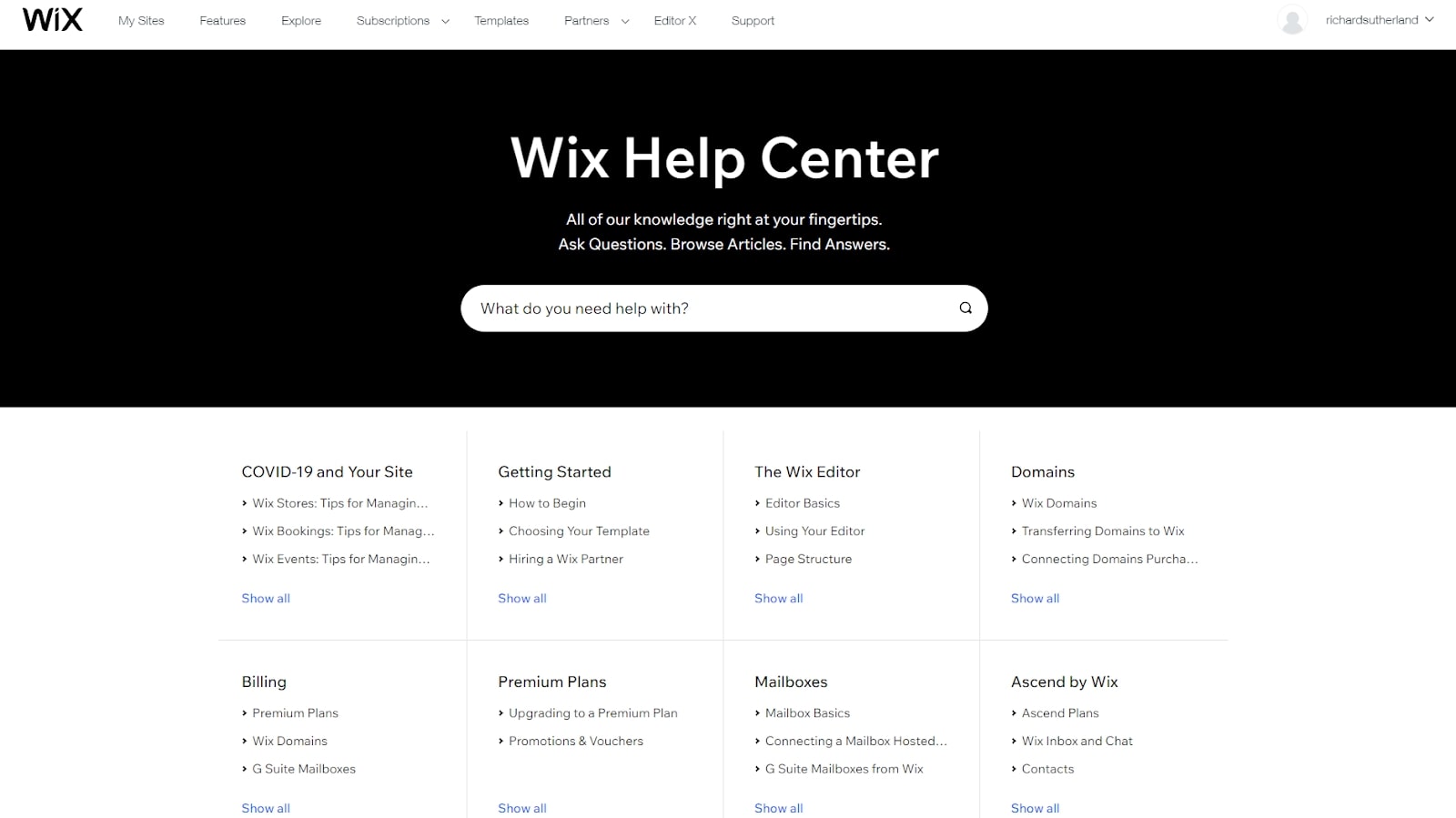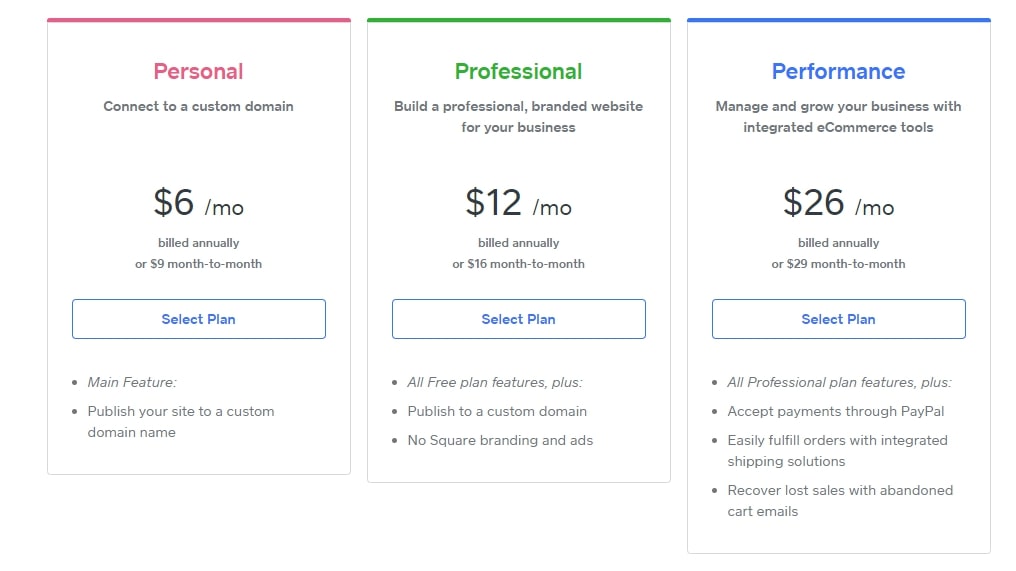Wix vs Squarespace vs Weebly
Comparing three of the top website builders available

How do you choose from the best website builders? Builders allow you to build a website before launching it online in hours, without touching code or anything more complex than a drag-and-drop editor. They've been around for some time, but recently the market has grown, and the overall quality of builders have increased.
Whether general or specializing in small business websites or ecommerce stores, these services have grown into user-friendly, advanced tools that anyone can use to make personalized, expressive, and high-quality websites.
Three of the leading builders on the market are Wix, Squarespace, and Weebly, and in our comparison, we pit Wix vs Squarespace vs Weebly, providing detailed insight on their similarities, differences, advantages, and disadvantages so that you can choose the best website builder for your needs.
Wix: best for customization and design flexibility
Wix plans include advanced tools, templates from the largest library available, an exceptional and highly-customizable editor, and comprehensive support. You get the full website builder included with the free package; upgrades provide an ad-free experience plus extra features; and plans have a 14-day money-back guarantee.
Squarespace: the best for support and professional design
Squarespace’s professional templates and impressive native integrations build on powerful ecommerce integration. Professional sites can be made without much experience, design flexibility matched by excellent and responsive support, and priced plans stacked with advanced features.
Weebly: the top choice for ecommerce and cheap plans
Weebly is a good choice if focusing on ecommerce, offering automation via emails and marketing to support your sales. It also provides the best mobile app, easy drag-and-drop functionality and the cheapest prices of all three builders compared.
Wix vs Squarespace vs Weebly: Features

At the surface level, Wix, Squarespace, and Weebly have similar features. They each have a web-based website editor, template designs, and marketing tools to help you get your site off the ground. But each builder has its niche.
Wix has arguably the most powerful website editor of the bunch. You can drag and drop elements anywhere on your pages and customize them exactly how you want them. Wix has the largest template library too, with over 500 options ready to go. They’re all responsive designs, so they work on mobile devices as well as on computers.
Wix has a massive app market filled with third-party extensions that you can use to introduce additional features to your website, and there's an extensive range of social sharing and analytics tools. Put this all together, and you get the most versatile website builder on our list.
While Squarespace has fewer templates than Wix, we feel that they’re of a higher standard. Real care has been put into ensuring that all the elements and layouts that you can drag and drop onto your pages work together as a theme, so it’s easier to make a cohesive website design with Squarespace than with our other choices.
Sign up to get the BEST of Tom's Guide direct to your inbox.
Get instant access to breaking news, the hottest reviews, great deals and helpful tips.
Squarespace also has a long list of built-in features. While Wix requires you to pay extra for its marketing and customer management suite, Squarespace has everything ready to go. It’s an all-in-one solution with marketing tools, search engine optimization, scheduling, analytics, and customer profiling baked into the interface.
While you can create standard websites with Weebly, it has a more pronounced focus on ecommerce than our other contenders. It's particularly easy to throw together a store website and begin managing customers and inventory. The templates are great, and you have access to marketing tools like email newsletters. You can even set up responses to be performed automatically when customers take an action, such as sending them a custom email when they purchase an item.
Another interesting Weebly feature is the mobile app. You can manage your store when you’re out and about, process and fulfil orders, check your inventory, and edit your website on the fly. You can interact with customers, read and write blog comments, and check on your site’s metrics from your mobile device.
So, all three website builders are absolutely loaded with features, though Wix has the most extensive library of templates and add-ons.
Wix vs Squarespace vs Weebly: Performance

For a website editor to perform well, it needs to be easy to use, and it needs to offer your customers an outstanding experience every time. Fortunately, all our website editors create websites that load quickly and perform well on any device.
The Weebly workflow is the easiest to get to grips with. It’s drag-and-drop, so you can place page elements in the order that you’d like to see. But you’re generally kept on rails, unable to make significant changes to the template designs. This makes it harder to create a truly unique site, but it does prevent you from making a big mess.
Squarespace relaxes the reins a bit more, so you can make personalized changes to your website, and the range of tools at your disposal is better. The user interface is context-sensitive, hiding things when you don’t need them to simplify the interface. It can be a little difficult to find your way around at first, but as soon as you understand how it works, you can design beautiful websites with ease.
Wix has by far the most powerful editor of the three, allowing you to drop elements wherever you want them to go. There’s also a huge list of add-ons that you can put on your pages to spice them up. This freedom comes at the cost of simplicity, and you’ll need to spend longer getting used to the tools that you’re provided. It’s also easier to stray from web design best practices.
Wix vs Squarespace vs Weebly: Support

All our website editors did well when we tested the response from their customer support services. Squarespace has an outstanding community and fast, 24/7 live chat/email support. Wix has an impressively detailed help center and offers support by phone and email. Weebly has a good support website and offers support by email, live chat, and phone.
They all get top marks, but if we had to choose a winner, it would be Wix for its comprehensive knowledge base full of great self-help resources.
Wix vs Squarespace vs Weebly: Pricing and plans

Wix offers a free plan, but it’s limited and you have to put up with advertising on your website. The cheapest personal plan is $14 a month, and there are three more plans that progressively add more features. The top VIP plan costs $39 a month. Wix also has three business plans, costing $23 to $49 a month.
On top of this, you may want to choose an Ascend by Wix marketing plan to complement your Wix website. Costing an additional $10 to $49 a month, this adds email campaigns, chat boxes, automation, social posts, and professional video ads.
Squarespace has a 14-day trial and four paid plans. Plans cost $12 to $40 a month if you pay annually, while ecommerce plans start at $18 a month. Finally, Weebly has a free plan and three paid plans costing $6 to $26 a month. Plans for serious ecommerce start at $12, but only the $26 Performance plan accepts PayPal. Take a look at our Squarespace promo codes page for any price cuts.
If you’re happy with a free website with ads on it, Wix and Weebly are fine choices. But most businesses will require an ad-free experience and solid ecommerce features, which cost between $28 to $38 a month on Wix, $18 to $40 a month on Squarespace, or $12 to $26 a month on Weebly.
Therefore, Weebly is the cheapest of the bunch, followed by Squarespace. Wix keeps many important features locked away in higher-priced plans, and you have to pay even more for its most advanced marketing tools.
Wix vs Squarespace vs Weebly: Verdict
Wix, Squarespace, and Weebly are all outstanding choices. We recommend Wix to people who like to tinker with every design element, to get their sites looking exactly how they want. It has a more powerful and complex website editor, though this does make it harder to get started with. It’s by far the most flexible website builder of the three.
Squarespace is the top choice if you want an all-in-one package with design, marketing, search engine optimization, and analytics seamlessly integrated. It also has our favorite designs of the bunch, with all elements of your website working together to create a cohesive user experience.
Weebly is a worthy contender, particularly if you have ecommerce in mind. It offers the best end-to-end sales funnel, with automated emails and marketing helping to support your sales. If you like to check on your site when you’re out and about, Weebly has the best mobile app.
All three of these website builders can be used to create fantastic websites. They all have free trials or free plans, so there’s no excuse not to try them all out to get a feel for which user interface suits your working style the best.
Further reading on website builders
For more information on all three builders covered in this article, read our how-to guides giving step-by-step instructions on how to build sites with Wix and Squarespace. If you wanted to opt for a WordPress site instead, you'll need one of the best website builders for WordPress and the best web hosting services, specifically the best WordPress hosting platforms.
Richard is a technology writer with over 20 years experience in website development, marketing, and SEO. A graduate in Computer Science, he has lectured in Java programming and built software for companies including Samsung and Walmart. Richard writes for TechRadar, IT Pro, Tom's Guide, and PC Gamer.




